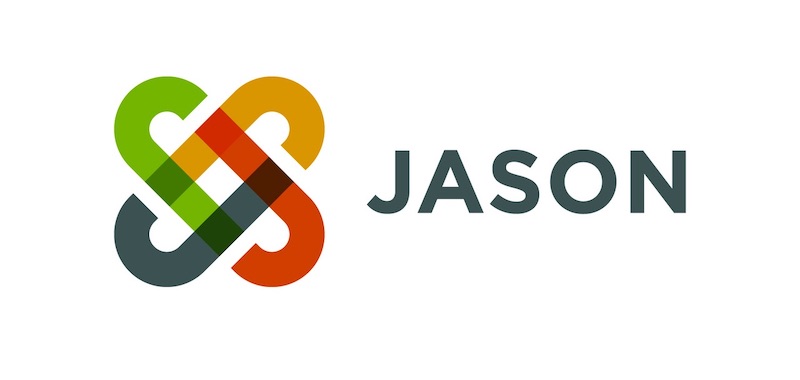To no one’s surprise, the roughly three-month stretch of March, April and May proved to be an “air pocket” for distribution M&A, according to Reed Anderson, managing director and head of Houlihan Lokey’s Specialty Distribution practice.
The dearth of deals during this period, which was the height of the coronavirus crisis for most U.S. businesses, was understandable for a few reasons. One, economic uncertainty surrounding COVID-19 complicated deal-making because it’s hard for companies to justify a capital-intensive M&A amid struggling end markets and widespread unemployment.
Two, lending dried up, making it near impossible for buyers that maintained an appetite for acquisitions to line up the financing.
And three, company executives could no longer hop on a plane, meet with their target’s counterparts and hammer out details of a merger or acquisition in person. For many businesses, this was the coup de grâce since CEOs and COOs could no longer look across a boardroom table and shake hands to seal the deal.
The rise of social distancing measures and stay-at-home orders across the country quickly placed almost many transactions on the shelf — especially “de novo,” or new, transactions where the parties didn’t know one another.
“In this current environment, conducting due diligence is harder, and assessing individuals and personalities is harder,” Anderson says. “If you are a strategic buying a smaller player in your space, you can take comfort in generally knowing what that target has been doing, and you have personnel capabilities on your team to make sure that M&A transaction works well post-close.
“But if you are a private-equity platform buyer meeting a team, or a business, for the first time through a sale process, getting comfortable with the business and with the team is a lot harder today because you are not spending the same amount of physical time with them. You are not sitting down, breaking bread, touring facilities or having natural sidebar conversations as much. That adds a layer of complexity and risk.”
Signs of Hope
The added layer of complexity and risk has somewhat eased, though not entirely with the coronavirus now surging across a country eager to reopen. But it appears that M&A is on the rebound.
Certainly, the number of closed transactions announced in June informed prospective buyers and sellers about companies’ growing eagerness to complete unfinished deals or begin new ones.
According to MDM’s most recent M&A roundup, several companies pulled the trigger on both acquisitions and divestments last month, including:
- Genuine Parts Co. selling S.P. Richards Co.
- W.W. Grainger Inc. shedding two overseas assets.
Distributors also added to their portfolios, including:
- Dakota Supply Group
- Mars Supply
- DGI Supply
- Atlas Copco
But the biggest deal of the last month — truly, the largest in recent memory — was WESCO International Inc. closing on its $4.5 billion acquisition of Anixter International Inc. The combination of these two electrical giants would be newsworthy anytime, but the fact that they closed during the coronavirus speaks to their willingness to get this deal done and their belief in how the new-look behemoth will disrupt the marketplace.
The transaction wasn’t without coronavirus-related complexities, of course. The companies included language in the closing announcement that COVID-19 “may have a material adverse effect on the combined company’s business, results of operations and financial conditions, and other important factors that could cause actual results to differ materially from those projected.”
In other words, their shared $200 million in synergies will likely take longer to realize. Despite the difficult environment WESCO and its Anixter subsidiary are facing, the company is sure to radically shift the electrical distribution landscape.
The acquisition now complete, the company becomes the largest electrical distributor in North America — by far — with annual sales of more than $17 billion.
While distribution likely won’t see deals of that scale cross the news wires anytime soon, the likelihood has grown for M&A activity to escalate across this space in the coming months, says Nick Troyer, a member of the Distribution team within Baird’s Global Investment Banking Group.
However, he adds, there could be a clear distinction in the deals that reach the finish line and those that fizzle out, and it all comes down to the sectors in which distributors operate.
“It is a bit of a case of the ‘haves’ and ‘have nots’ right now,” Troyer says. “There are businesses that play in attractive thematic areas like outdoor living — companies like SiteOne Landscape Supply and Pool Corp. — that are experiencing solid demand. Pockets of health care and hygiene categories are very active.
“But other sectors like energy, where performance has been choppier and outlook less certain, will likely take longer to come back.”
Beyond the category consideration, most experts agree that M&A will favor strategic buyers over financial buyers in the coming months for a variety of reasons, though balance will eventually be restored as economic conditions, especially the lending markets, return to normal.
“The advantage is definitely with strategic buyers today, whether those are standalone companies or private equity-backed companies,” Anderson says. “Where private equity is putting more capital to work today is through their portfolio companies pursuing add-on acquisitions. However, private equity platform opportunities are likely to increase significantly as we see the economy improve.”
Valuations Increasingly Complex
Companies struggling through this current crisis could make intriguing acquisition targets, according to investment bankers who advise buyers and sellers in strategic and financial deals. But the number of so-called distressed sales — which are plentiful in other industries — isn’t as likely in distribution, which is a unique business model.
“Distributors can generate cash in a downturn by unlocking working capital. As a result, we have not seen many distressed sales within distribution,” Anderson says. “Companies generally have enough liquidity to survive — at least for the near-term. However, owners will need to make a significant reinvestment in working capital once the economy turns positive.
“That is where I anticipate more transactions, as owners seek growth capital or partners to help them expand market share as the economy improves. We are speaking to a number of business owners seeking to proactively position their balance sheets, so they are in a position to take significant market share gains from less well-capitalized competitors when the economy improves.”
Another issue: Valuations have become increasingly difficult to gauge. As Anderson notes, “One cannot make a blanket statement ‘All valuations are down X.’ Valuations are situation-specific, and even to talk about multiples in today’s environment is a challenge.”
In other words, when state and local governments enacted stay-at-home orders and shut down all non-essential businesses, the notion of a meaningful earnings variable went out the window.
“I definitely would not say that a business that experiences challenges right now is going to face a distressed valuation,” Troyer says. “On the other end of the spectrum, however, I do believe there will be a premium for businesses that outperform through this crisis.
“When we’ve analyzed valuation multiples over time across distribution sectors, we clearly see the value in downside protection. The stronger performers are also likely to be the first to come back out.”
But what makes a strong performer in the age of coronavirus? For T.J. Monico, practice leader, Industrial Distribution Investment Banking, KeyBanc Capital Markets, it’s less about how a company suffered during COVID-19 but more about how it reacted.
Did the business manage cash? Did it pivot to pandemic-specific products like personal protective equipment (PPE)? Did it act conservatively?
In some ways, he says, the pandemic is reminiscent of the Great Recession of 2008/’09, which is the only comparison in our lifetimes. How businesses navigated that downturn still resonates today, and how they navigate COVID-19 will be asked for many years to come.
“I think the shape of the recovery — how quickly the company was able to get back to pre-COVID earnings — will be an important factor,” Monico says. “For the last 11 years since the Great Recession, in every sale process, we talked about how the company performed in the Great Recession.
“I can’t imagine that for the next three to five years we’re not going to be answering the question, ‘How did they do during COVID?’ One thing we’re telling all of our clients that plan to sell in a couple of years — make sure you’re tracking and documenting what you did when COVID hit.”
That means everything from isolating the financial impact of COVID-19 to documenting job-saving measures to proving you didn’t just hunker down and wait for the storm to pass but instead pivoted your product mix (e.g., sold JanSan products or PPE) or retooled your sales model or enhanced your e-commerce capabilities. These moves will have more bearing on your perceived value to a pursuer.
“Clearly, some businesses have performed better,” Anderson says. “Some have pivoted incredibly well. This is going to be about who the nimble businesses were that found solutions during this pandemic for their customers, and for employees and supplier partners. But it is never too late to start getting better.
“A number of businesses pivoted away from their depressed core markets or their core product so that they could distribute PPE or sanitation or other products that their customers need. Those companies are demonstrating a real value proposition to their customers. They are creating solutions.”
Be Prepared for a New Normal
As deals trickle out and perhaps ramp up in the second half of 2020, the question now is not “Does the sales process change?” but rather “How much does the sales process change?” And that goes beyond trading a handshake for an elbow bump or formal bow and swapping face-to-face meetings for online video conference calls.
“We’re seeing a lot of changes with the typical cadence of a deal,” Troyer says. “Most notably, the in-person events — management presentations, the all-important management dinners, diligence sessions, and facility tours — those just aren’t practical today. But we’re still seeing deals get done.
“A lot of what we typically did in person has shifted to virtual. I certainly expect that to be the norm over the near term, but I also think some of these changes will stay with us over the longer term as well.”
KeyBanc Capital Markets’ Monico agrees. “The big challenge is what does the sale process look like on the back end of this?” he says. “I think if we see anything that’s going to launch this year, it’s going to be done in a very narrow, quiet fashion instead of auctioning the businesses broadly.
“Some business owners are at a point where they have a good reason to sell a business. I think the deals that are most likely to get done near term are going to be more creative or sold to strategic buyers.”
Troyer says that while it’s still early, he and the industrial team at Baird are optimistic that the M&A market is starting to turn the corner.
“We’ve been watching a lot of factors — stability in the financing markets, private equity appetite for new investments, the ability of strategic buyers to begin focusing externally again,” he says. “We’re looking across the Baird platform at developments within our existing engagements as well as new pitch activity.
“This all points to more M&A on the horizon as we head into the second half of the year. It will take some time to get back to pre-COVID-19 levels but in distribution, in particular, we’re confident that the benefits of consolidation along with strong private equity interest in the space will continue to fuel M&A over the long term.”
Monico says the volume of deals will come down to several factors. Companies, especially publicly held corporations, may want to stay on the sidelines to ensure they’ve stabilized their business before taking a deal to their boards. But opportunities will emerge, the economy will stabilize and M&A will recover — albeit at a slower rate.
“There’s a liability for management teams to prioritize M&A right now,” he says. “That said, as more time progresses, I think that’ll be much more of a focus. Some of our strategic buyer clients are starting to have those conversations. At the same time, it’s tough to value a business. It’s tough for business owners to predict — even in the next month — how COVID is going impact the company and all the challenges that come with adding a new asset. I do think among businesses that aren’t impacted as badly, aren’t distressed, and have shown they can recover and have a good reason to sell, we’ll start to see some activity. It’s just going to be measured.”
Related Posts
-
Companies like 3M are prioritizing distribution for those most in need, and the American Chamber…
-
Jason Industries Inc., Milwaukee, Wisconsin, (Nasdaq:JASN) (Nasdaq:JASNW), parent company to a global family of manufacturers…
-
Though the fallout for distributors from COVID-19 continued to be a hot topic in April,…





